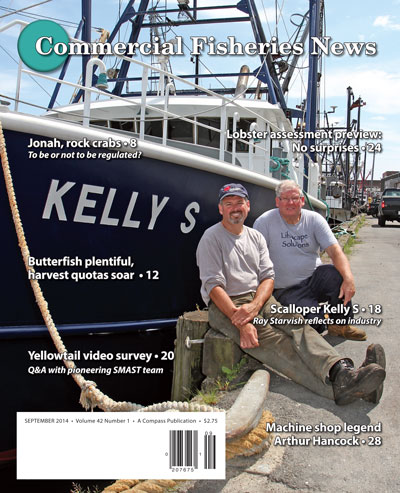Building on more than a decade of experience conducting video surveys for Atlantic sea scallops, researchers at the University of Massachusetts Dartmouth School for Marine Science and Technology (SMAST) are now bringing this innovative survey technique to a new frontier.
Since the spring of 2013, with considerable help from industry, the SMAST team has been exploring whether video survey technology can be used as a tool to develop better biomass estimates for Georges Bank yellowtail flounder.
The stock is deemed to be at a critically low level of abundance based on traditional bottom trawl surveys and has been a limiting factor for both the scallop and groundfish fisheries on Georges Bank for a number of years. But fishermen have long been concerned that the bottom trawl surveys miss yellowtail and, so, may not provide a complete measurement of abundance.
The yellowtail video survey work was made possible through contributions from industry, SMAST, and the commonwealth of Massachusetts. Kevin Stokesbury, chairman of SMAST’s Department of Fisheries Oceanography, is the chief scientist on the project. SMAST researchers N. David Bethoney, Greg DeCelles, and Erin Adams, along with master’s degree student Travis Lowery and others, are assisting. All surveys to date have been conducted aboard the F/V Justice out of New Bedford, captained by Ronnie Borjeson.
In mid-August, CFN Associate Editor Janice Plante talked with Stokesbury and Bethoney to learn more about the project -– and the promise of improving groundfish stock assessments through the expanded use of video surveys. Here is a condensed version of their conversations. -–Editor

Read the rest and much, much more in the September issue of Commercial Fisheries News.
Read online immediately and download for future reference.







 Updating...
Updating...